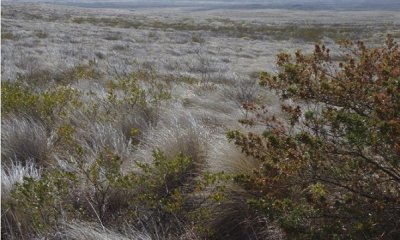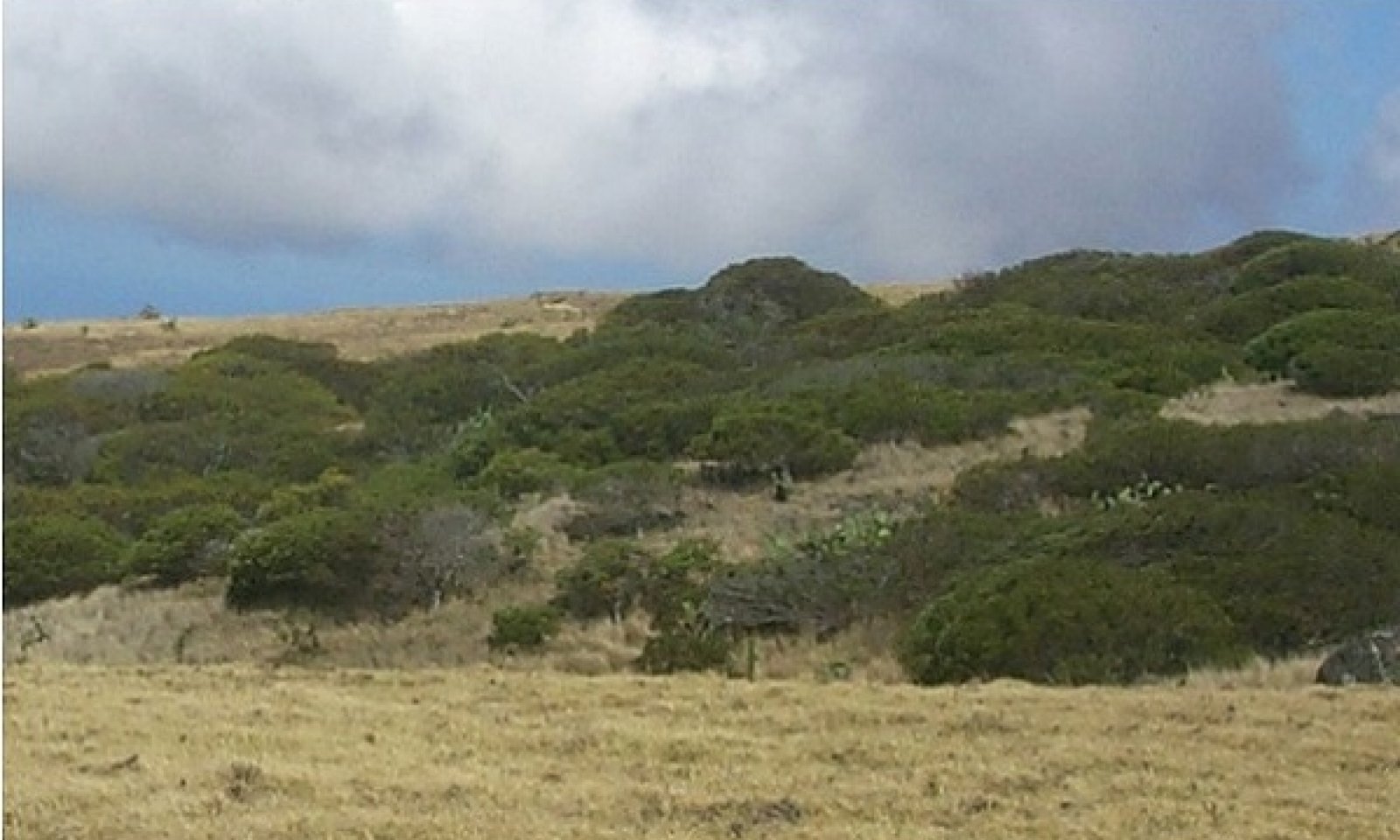
Isothermic Forest
Scenario model
Current ecosystem state
Select a state
Management practices/drivers
Select a transition or restoration pathway
- Transition T1A More details
- Restoration pathway R2A More details
- Transition T2A More details
- Transition T2B More details
- Restoration pathway R3A More details
- Transition T3A More details
- Restoration pathway R4B More details
- Restoration pathway R4A More details
- Transition T4A More details
- Restoration pathway R5A More details
- Restoration pathway R5B More details
-
No transition or restoration pathway between the selected states has been described
Target ecosystem state
Select a state
Description
This state consists of one community phase. Fully intact examples of this community no longer exist. This description is compiled from field observations of remnant sites, restored protected sites, isolated plants on disturbed sites, and historical accounts. Some evidence of the reference community has been gleaned from examination of remnant vegetation in shallow ravines. It is thought that the species found in these ravines is similar to those that previously existed on the uplands (McEldowney 1983). The largest remnant example has a high percent canopy cover of koaia (Acacia koaia). This may be due to the ability of koaia to reproduce and grow quickly in disturbed, light-rich situations when protected from browsing animals. The original community may have had less koaia cover and more cover of slower-growing native dry forest trees.
Remnant koaia stands exist currently only on Kohala. There are accounts of koaia having been present in the middle of the 20th century on the areas of this ecological site that are on the slopes of Mauna Kea (Billy Paris, rancher, personal communication). There also are a few naturally-occurring koaia on older soils on Puuanahulu near Puuwaawaa, in the southern extreme of this ecological site. Soils, elevations, and climate are very similar along the contours from Kohala to Puuwaawaa except where recent (1500-3000 years old) Mauna Loa lava flows have overrun the older Mauna Kea soils just to the north of Puuanahulu; these younger flows form part of ecological site F161BY500 Ustic Isothermic Forest). These factors support the hypothesis that this ecological site existed on older, ash-derived soils from Kohala to Puuanahulu prior to human disturbance. Analysis of prehistoric land snail shells suggests that much of the original vegetation may have been similar to the xerophytic forest found near Puuwaawaa (Christensen 1983).
Koa (Acacia koa) is found at higher elevations on Mauna Kea where this ecological site merges into F160XY502 Isomesic-Cool Isothermic Forest.
Surprisingly, a few individual hapuu (Cibotium glaucum) were observed along small gulches within grassland areas of this ecological site on Mauna Kea. Typical dryland species such as Myrsine lanaiensis and Sophora chrysophylla occurred in the same area.
Submodel
State 2
Restored Koaia Overstory State
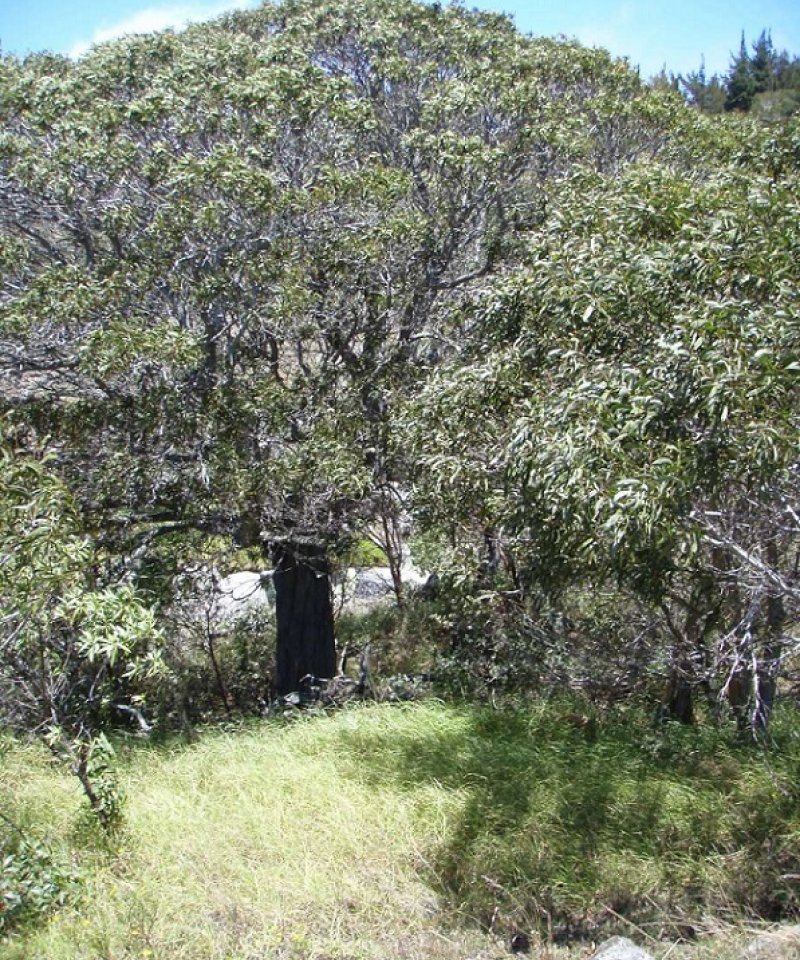


Description
This state consists of one community phase. It is able to exist only when protected from ungulates, wildfire, and weed suppression.
Restoration of this state is being carried out successfully currently on a number of sites. The initial requirement for restoration is a properly designed, well maintained fence capable of excluding all ungulates. Suppression of introduced grass cover by herbicides and dense plantings of native trees, shrubs, and vines is necessary. Fire protection must be provided by establishing and maintaining a fuelbreak; controlled grazing outside the planting area is helpful with this. Irrigation of native plantings has been found to be very useful in the first six to twelve months of establishment.
Transitions to grassland states (State 3 or 4) will proceed without continued management and protection.
Submodel
State 3
Naturalized Grassland State
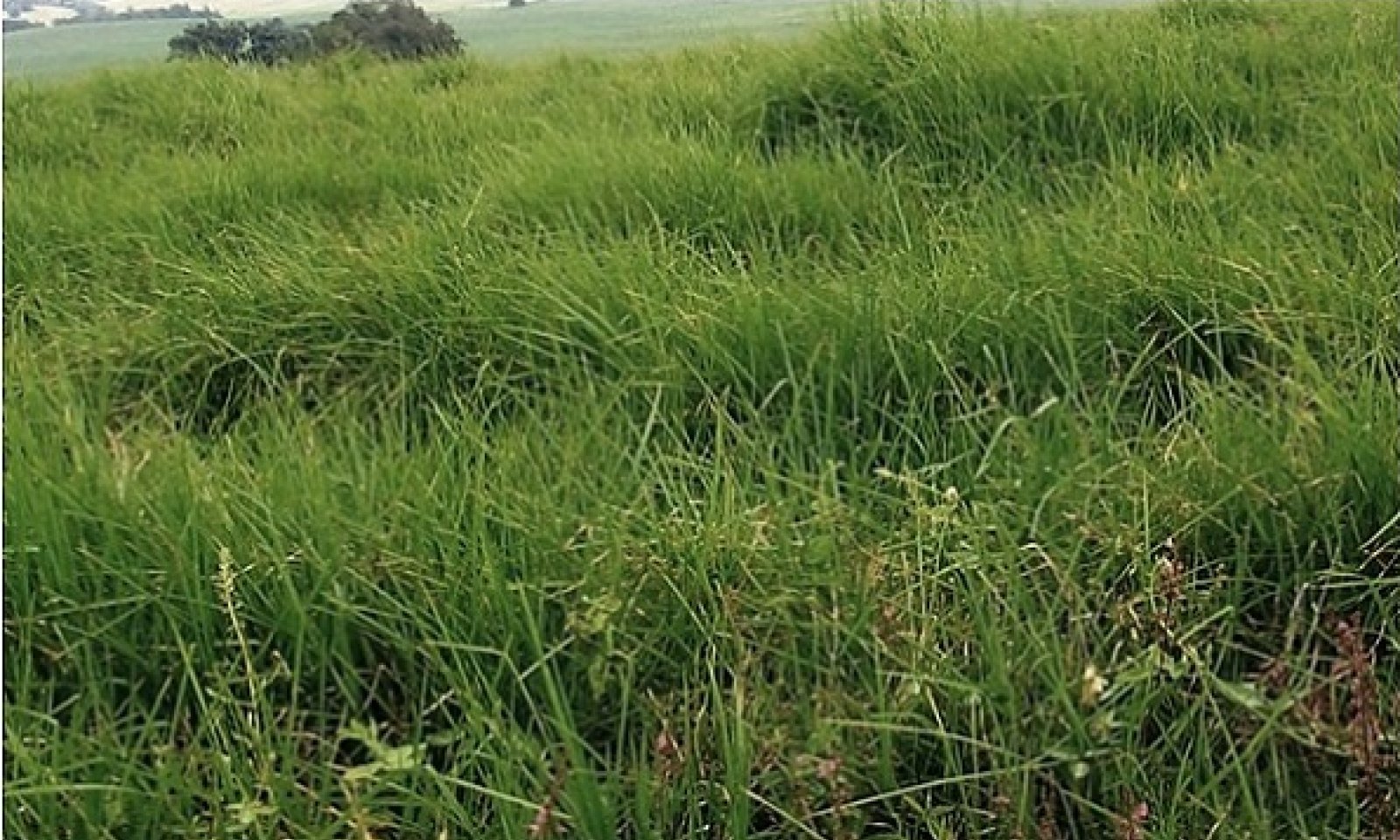



Description
This state consists of one plant community dominated by kikuyugrass (Pennisetum clandestinum). This species, which is both rhizomatous and stoloniferous is adapted to herbivory and is very competitive with other vegetation. It is still dominant in higher, moister areas of this ecological site. However, with excessive disturbance from trampling, grazing, and/or fire, this state will transition to State 4 Fountaingrass Invaded, where kikuyugrass gives way to fountaingrass and other grass species. In the absence of fountaingrass, kikuyugrass probably would be the dominant pasture grass in lower, drier areas of this ecological site where fountaingrass has successfully invaded. Guineagrass (Urochloa maxima) is present in very small amounts, mainly along roadsides and in drainages where moisture is more abundant. Guineagrass is very heavily grazed by livestock and is less tolerant of grazing than kikuyugrass.
Invasion by black wattle (Acacia mearnsii), a weedy, introduced tree species, is occurring in higher elevation, moister areas of this state.
Submodel
State 4
Fountaingrass-Invaded State
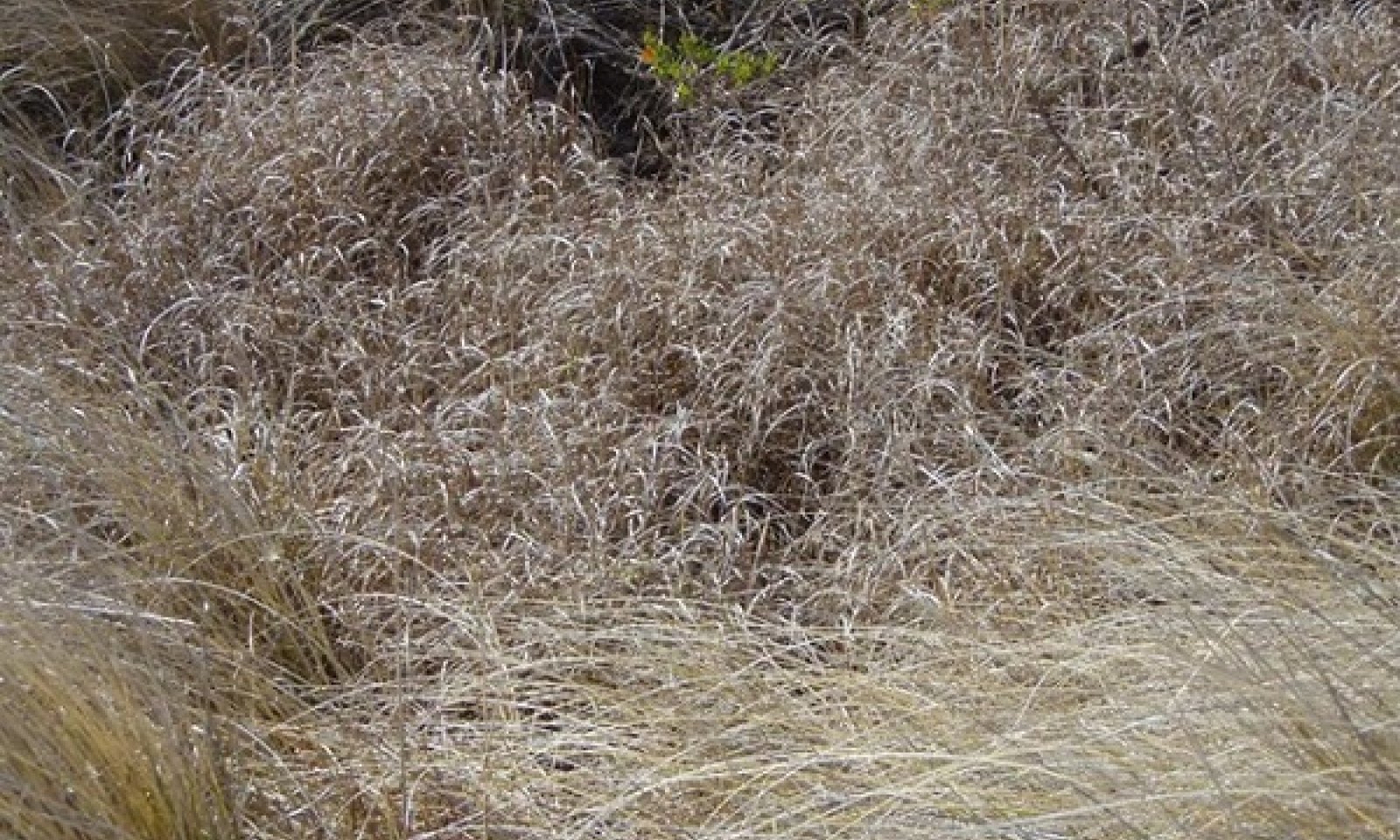


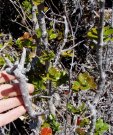






Description
This state consists of three community phases that have continuous grass cover with no or very few trees, shrubs, and forbs. Fountaingrass (Pennisetum setaceum) may form nearly monospecific stands or may be interspersed with islands of buffelgrass (Pennisetum ciliare). Koa haole (Leucaena leucocephala), a leguminous browse species, should thrive in this environment, as evidenced by its abundance on sites protected from livestock and wildfire. However, it typically is present only in very small amounts in grazed pastures.
With continuous heavy grazing, particularly by cattle, fountaingrass will decrease. Koa haole and bush indigo (Indigofera suffruticosa) also will decrease under heavy grazing pressure. Increasers include jaraguagrass or thatchinggrass (Hyparrhenia rufa), barbwiregrass (Cymbopogon refractus), molassesgrass (Melinis minutiflora), Natal redtop or rose Natal grass (Melinis repens), bluestems (Bothriochloa spp.), and lesser amounts of buffelgrass and weedy forbs. With severe deterioration, shrubby species such as lantana (Lantana camara) and apple of sodom (Solanum linnaeaum) increase. Shortgrasses such as Bermudagrass (Cynodon dactylon), kikuyugrass, low-vigor buffelgrass, and weedy annual forbs become more abundant, as well as lesser amounts of pricklypear cactus or Barbary fig (Opuntia ficus-indica). Pricklypear cactus abundance has been limited by an introduced biocontrol insect.
Native aalii (Dodonaea viscosa) can increase with exclusion of livestock grazing or lack of wildfire. The forage potential of the site is reduced by the increased canopy cover of this native shrub.
Submodel
Description
This state consists of one community phase. It develops from State 4 Fountaingrass-Invaded when exclusion of livestock and lack of fire allow growth of a shrub canopy consisting principally of native species. Wildfire will rapidly restore this state to State 4 Fountaingrass-Invaded.
Submodel
Mechanism
The Reference State will transition to State 3 Naturalized Grassland when cleared by fire, long-term ungulate disturbance, or mechanical means. Desired forage species, typically kikuyugrass (Pennisetum clandestinum), are then established from sprigs or seed.
Mechanism
Restoration of this state to an approximation of State 1 Reference by long term protection and management, including measures to eliminate introduced grasses in the understory.
Mechanism
This state will transition to State 3 Naturalized Grassland if protection and management are removed. Resumption of ungulate access would destroy native understory plants, create a high browse line on native overstory plants, and eliminate native plant reproduction. Introduced plant species would rapidly reinvade the site. Wildfire could obliterate a restored site.
Mechanism
This state will transition to State 4 Fountaingrass Invaded if protection and management are removed and fountaingrass is present nearby. Resumption of ungulate access would destroy native understory plants, create a high browse line on native overstory plants, and eliminate native plant reproduction. Introduced plant species including fountaingrass would rapidly reinvade the site. Wildfire could obliterate a restored site but not kill fountaingrass.
Mechanism
This state can be restored to State 2 Restored Koaia Overstory. The site must be fenced to exclude all domestic and feral ungulates. A fuelbreak may be maintained around the fence line by grazing or mowing. Kikuyugrass must be killed by herbicide, followed by plantings of native trees, shrubs, and vines. Supplemental irrigation is very useful in the early stages of restoration.
Mechanism
This state transitions to State 4 Fountaingrass Invaded with continuous livestock grazing that reduces the competitiveness of kikuyugrass, allowing eventual dominance by fountaingrass. Wildfire accelerates this pathway.
Mechanism
This state may be restored to State 2 Restored Koaia Overstory by fencing out all ungulates, excluding fire by fuelbreaks and controlled grazing outside the fence, herbicide applications, extensive replanting of native species, and irrigation in the early stages of replanting.
Mechanism
It may be possible to restore this state to State 3 Naturalized Grassland by fire exclusion, herbicide application, prescribed grazing, and possibly replanting kikuyugrass. Success would be more likely in higher elevation, moister areas of this ecological site. This pathway may not be feasible in lower elevation (warmer and drier) areas because kikuyugrass is less well-adapted for these areas.
Mechanism
This state can transition to State 5 Ungrazed Grassland when livestock grazing is light or excluded and when wildfire does not occur for a number of years. The result is growth of stands of native aalii shrubs.
Mechanism
This state may be restored to State 2 Restored Koaia by fencing out all ungulates, establishing a fuelbreak and managing grazing outside the restoration site, controlling weeds with herbicides, planting native species, and providing irrigation in the early stages of replanting.
Model keys
Briefcase
Add ecological sites and Major Land Resource Areas to your briefcase by clicking on the briefcase (![]() ) icon wherever it occurs. Drag and drop items to reorder. Cookies are used to store briefcase items between browsing sessions. Because of this, the number of items that can be added to your briefcase is limited, and briefcase items added on one device and browser cannot be accessed from another device or browser. Users who do not wish to place cookies on their devices should not use the briefcase tool. Briefcase cookies serve no other purpose than described here and are deleted whenever browsing history is cleared.
) icon wherever it occurs. Drag and drop items to reorder. Cookies are used to store briefcase items between browsing sessions. Because of this, the number of items that can be added to your briefcase is limited, and briefcase items added on one device and browser cannot be accessed from another device or browser. Users who do not wish to place cookies on their devices should not use the briefcase tool. Briefcase cookies serve no other purpose than described here and are deleted whenever browsing history is cleared.
Ecological sites
Major Land Resource Areas
The Ecosystem Dynamics Interpretive Tool is an information system framework developed by the USDA-ARS Jornada Experimental Range, USDA Natural Resources Conservation Service, and New Mexico State University.




